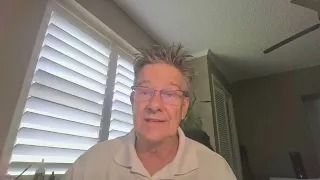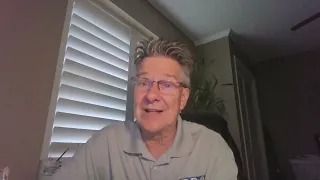Call (727) 784-5555
Blog Layout
Yes, the reverse mortgage market is projected to experience growth in 2025. Analyses indicate that the market size will increase from $1.79 billion in 2024 to $1.92 billion in 2025, reflecting a compound annual growth rate (CAGR) of 7.6%.
Several factors contribute to this anticipated growth:
- Higher Lending Limits: The Federal Housing Administration (FHA) has raised the Home Equity Conversion Mortgage (HECM) lending limit to $1,209,750 for 2025, up from $1,149,825 in 2024. This increase enables homeowners with higher-valued properties to access more equity. MLS Reverse Mortgage
- Industry Collaboration: Reverse mortgage professionals are enhancing outreach efforts to collaborate with traditional mortgage sectors and related industries. This strategy aims to expand distribution channels and increase product awareness among potential borrowers. HousingWire
- Demographic Trends: As the population ages, more seniors are exploring financial solutions like reverse mortgages to support their retirement, contributing to market expansion.
While these factors suggest a positive trajectory for reverse mortgages in 2025, it's essential for potential borrowers to assess their individual financial situations and consult with financial advisors to determine if this option aligns with their retirement goals.
Reverse Mortgage Market Poised for Growth in 2025
Have A Question?
Use the form below and we will give your our expert answers!
Reverse Mortgage Ask A Question
Thank you for contacting us.
We will get back to you as soon as possible.
We will get back to you as soon as possible.
Oops, there was an error sending your message.
Please try again later.
Please try again later.
Start Your Loan
with DDA todayYour local Mortgage Broker
Mortgage Broker Largo See our Reviews
Looking for more details? Listen to our extended podcast!
Check out our other helpful videos to learn more about credit and residential mortgages.

By Didier Malagies
•
April 10, 2025
Yes, the reverse mortgage market is projected to experience growth in 2025. Analyses indicate that the market size will increase from $1.79 billion in 2024 to $1.92 billion in 2025, reflecting a compound annual growth rate ( A reverse mortgage can be a useful financial tool for certain homeowners, especially older adults looking to access home equity without selling their home. Here are the key benefits of a reverse mortgage: 🏡 1. Access to Home Equity Without Selling You can tap into your home's equity and receive funds as a lump sum , monthly payments , or a line of credit , without having to sell your home or move out. 👴 2. No Monthly Mortgage Payments Unlike a traditional mortgage, you don’t make monthly payments . Instead, the loan is repaid when you sell the home, move out permanently, or pass away. 💵 3. Flexible Payout Options You can choose how to receive the funds: Lump sum Monthly payments (tenure or term) Line of credit Or a combination This flexibility helps match your financial needs. ✅ 4. Stays in Your Name You retain ownership of your home, and as long as you meet the loan requirements (like maintaining the home and paying property taxes/insurance), you can continue to live there. 🛡️ 5. Non-Recourse Loan You (or your heirs) will never owe more than the home is worth . If the home’s value drops below the loan balance, the FHA insurance (if it's a HECM—Home Equity Conversion Mortgage) covers the difference. 👨👩👧👦 6. Heirs Have Options When you pass away, your heirs can: Repay the loan and keep the home Sell the home and keep any remaining equity Walk away if the loan balance exceeds the home’s value 💰 7. Supplement Retirement Income Reverse mortgages can provide a source of income during retirement, helping cover expenses, delay Social Security, or preserve investments. Would you like a quick rundown of the downsides too, just so you have the full picture?

By Didier Malagies
•
April 7, 2025
Break-Even Point: Calculate how long it will take for your monthly savings to offset the closing costs associated with refinancing. If you plan to stay in your home beyond this break-even period, refinancing could be advantageous. Bankrate Loan Term Adjustment: Refinancing provides an opportunity to modify your loan term. For instance, switching from a 30-year to a 15-year mortgage can lead to significant interest savings over time, though it may increase your monthly payments. Credit Score and Debt-to-Income Ratio: Lenders assess these factors when determining your eligibility and interest rate for refinancing. A higher credit score and a lower debt-to-income ratio can secure more favorable terms. Market Outlook: Experts predict that mortgage rates may continue to decline slightly throughout 2025. For example, Fannie Mae forecasts the 30-year fixed mortgage rate to average 6.2% in the final quarter of 2024, with a further decrease to 6% in the first quarter of 2025. However, these projections are subject to change based on economic conditions and Federal Reserve policies. Next Steps: Assess Your Current Mortgage: Review your existing loan terms, interest rate, and remaining balance. Compare Offers: Obtain quotes from multiple lenders to ensure you're getting the best possible rate and terms. Consult a Financial Advisor: Seek personalized advice to determine if refinancing aligns with your financial goals and circumstances. In summary, refinancing can be a strategic move to reduce your mortgage payments and total interest costs. However, it's essential to carefully evaluate the associated costs and your long-term plans to ensure they align with your financial objectives. tune in and learn https://www.ddamortgage.com/blog didier malagies nmls#212566 dda mortgage nmls#324329

By Didier Malagies
•
March 31, 2025
1. FHA Loan (Federal Housing Administration Loan) Credit Score Requirement: As low as 500 (with 10% down) or 580+ (with 3.5% down). Best For: First-time homebuyers and those with lower credit. Pros: Low down payment, flexible credit requirements. Cons: Requires mortgage insurance premiums (MIP). 2. VA Loan (Veterans Affairs Loan) (For eligible military members & veterans) Credit Score Requirement: No official minimum, but lenders may require 580-620+. Best For: Veterans, active-duty military, and qualifying spouses. Pros: No down payment, no private mortgage insurance (PMI), competitive interest rates. Cons: VA funding fee required. 3. USDA Loan (United States Department of Agriculture Loan) Credit Score Requirement: 580+ preferred, some lenders may allow lower. Best For: Buyers in rural or suburban areas with low-to-moderate income. Pros: No down payment, lower mortgage insurance costs. Cons: Must meet income and location eligibility. 4. Subprime or Non-Qualified Mortgage (Non-QM Loans) Credit Score Requirement: 500-620+ (varies by lender). Best For: Borrowers who don’t qualify for conventional loans. Pros: Flexible underwriting standards, alternative income verification. Cons: Higher interest rates and fees. 5. Conventional Loan (With a Non-Traditional Lender) Credit Score Requirement: Typically 620+, but some lenders allow lower with compensating factors. Best For: Borrowers with a higher down payment or strong income history. Pros: No upfront mortgage insurance if you put 20% down. Cons: Stricter credit requirements, PMI required if <20% down. Tips to Improve Mortgage Approval with Low Credit Increase your down payment (higher down payments can offset low credit). Work on improving your credit score before applying. Look for lenders specializing in low-credit borrowers. Consider a co-signer or joint application with someone with better credit. tune in and learn https://www.ddamortgage.com/blog didier malagies nmls#212566 dda mortgage nmls#324329 I


